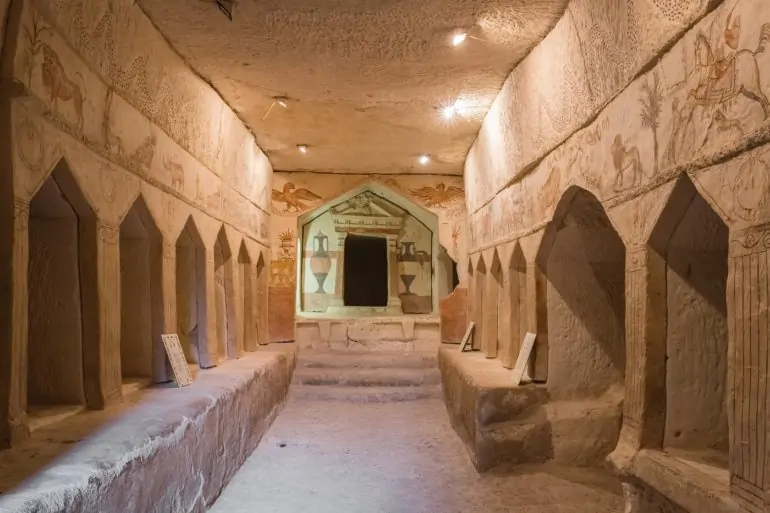
There are several UNESCO World Heritage sites in Israel – 10 at last count and over a dozen more on the tentative list. When you consider the size of Israel, compared to say the United States which has 25 sites, that is pretty spectacular! All of Israel’s World Heritage sites are of cultural significance and worthy of a visit. The ancient ruins inside Israel’s Bet Guvrin/Maresha National Park are no exception.
Mentioned in the book of Joshua as one of the cities of Judah during the First Temple Period, Maresha was given as an inheritance to the tribe of Judah (Caleb’s clan – Numbers 18:6). In 2 Chronicles 11:5-10, we are told it was one of King Rehoboam’s fortified cities. After its destruction in 40 BC by the Parthians, Maresha relocated to the nearby village of Bet Guvrin (known then as Roman Eleutheropolis) and ended up becoming the major administrative center for the district. The Bet Guvrin & Maresha excavated ruins can be seen throughout this unique archaeological park: an amphitheater, bathhouse, and city walls built during the Roman occupation, and a vast network of caves used for a variety of purposes which were carved by humans throughout history.
Let’s take a look at some of the ruins from antiquity at the Bet Guvrin National Park:
AMPHITHEATER
The amphitheater at Bet Guvrin (and later Eleutheropolis) was built in the Roman Period (@200 AD) during the reign of Emperor Lucias Septimius Severus. It was used during this era for animal and gladiator contests. It could seat around 3,500 people and was in use until destroyed by an earthquake in 363 AD. The remnants of a bathhouse and city walls can also be seen here.
BELL CAVES
Located in the heart of the Judean Lowlands the soft chalk “bell” shaped caves at Tel Maresha extend to more than 1200 acres. These quarries, hewn by hands, consist of water cisterns, bathhouses, burial tombs, dovecotes, olive presses and storage caves. The excavated chalk was used as building material for the city above. There is a very large cavernous cave, used for storage in antiquity, in which pilgrims on tour love to worship. Due to the beautiful acoustics, it’s like listening to angels sing.
BURIAL CAVES
Tombs for the Greek, Sidonian, and Edomite inhabitants of the area still exist here. The Sidonian caves, belonging to the Apollophanes family – leaders of the Sidonian community, are the only ones that were painted. The largest of the Sidonian caves has animals painted above the niches: a 3-headed dog, a rooster, a bright red phoenix. Another tomb is decorated with a man playing a flute and woman playing a harp.
The Bet Guvrin/Maresha National Park UNESCO World Heritage site is located in Central Israel. Under the supervision of the Israel Antiquities Authority, the Archaeological Seminars Institute manages the Dig for a Day project. This is a hands-on experience at the caves which includes excavation, sifting, examination, and exploration. The program lasts approximately 3 hours. If time is a factor The Bet Guvrin National Park site can be included in any of our itineraries with a timeframe to suit your schedule.
Once a site is declared a World Heritage Site the country, in this case Israel, that possesses it is obligated to protect it for future generations. Rest assured the Bet Guvrin National Park UNESCO World Heritage Site is in good hands and will be here when you arrive!
Coral Travel & Tours is dedicated to creating an Israel experience catered to the needs of each tour group that travels with us. We hope to see you in Israel!
Pastors’ Guide to Israel Tour Planning

